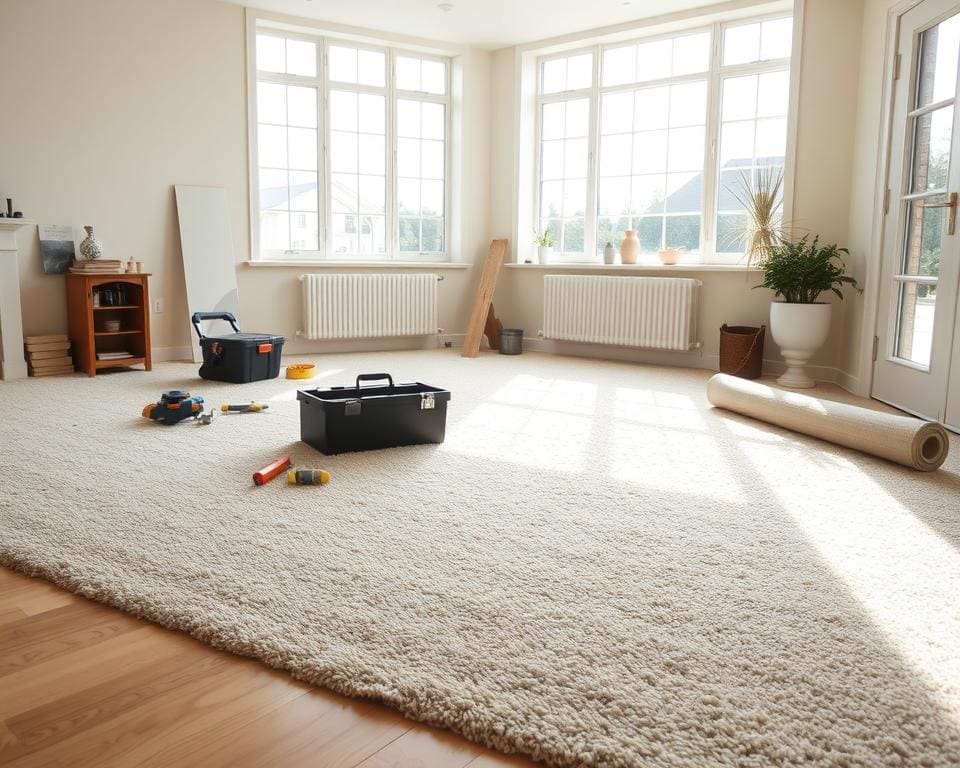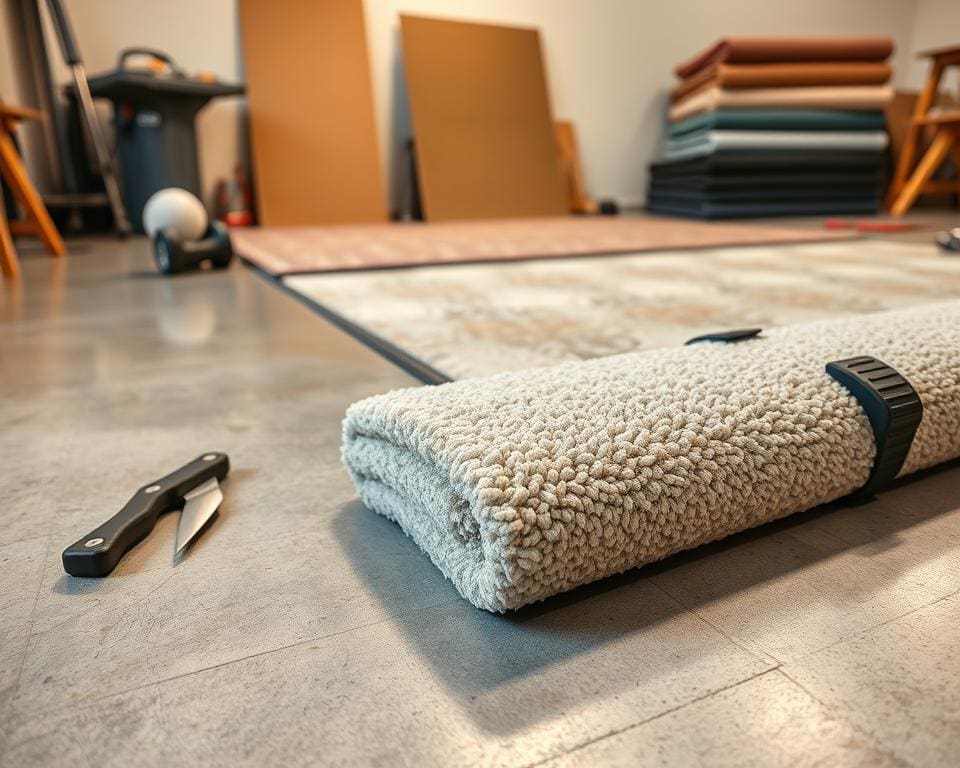For many homeowners, the thought of DIY carpet fitting raises questions about the complexity and practicality of carpet installation. Is DIY Carpet Fitting Really That Difficult? This article aims to demystify the process, providing an insightful lens into the world of carpet fitting. From understanding essential tools to navigating the common challenges of laying carpet, we will guide you through the techniques necessary to fit carpet yourself with confidence. With the right information and a positive outlook, the task may not be as daunting as it seems.
Understanding the Basics of Carpet Fitting
Ever wanted to know how to install a carpet?, carpet installation is easier than you think! Before embarking on a journey of carpet installation, it’s vital to grasp the carpet fitting basics. The choice of carpet significantly impacts the overall aesthetics and comfort of a space. Common types to consider include loop pile, cut pile, and luxury vinyl. Each type offers distinct characteristics suited for various uses. Understanding these options aids in making informed decisions while evaluating how to fit carpet effectively.
Two primary techniques dominate the carpet installation landscape: stretch fit and glue down. Stretch fitting involves using gripper edges to hold carpet taut across the floor while glue down provides a more permanent solution for high-traffic areas. Familiarity with these methods simplifies the task ahead and ensures a professional-looking finish.
Additionally, the dimensions and layout of the room play a crucial role in the fitting process. Accurate measurements not only prevent waste but also create a perfect fit around corners and edges. Carefully planning these aspects prepares you for the exciting challenge of transforming your space.
Insights from regional specialists like Wirral Carpet Cleaner reveal local preferences and trends, illustrating how community input shapes choices in carpet selection and installation approaches. This understanding enriches the DIY experience, empowering you with knowledge that enhances your project.
Is DIY Carpet Fitting Really That Difficult?
Many people hesitate when it comes to DIY carpet fitting, often viewing carpet installation as a daunting task reserved for professionals. This perception can overshadow the real potential for success that lies in the hands of enthusiastic home improvers. With the right guidance and a set of reliable carpet tools, anyone can embark on this rewarding journey.
Numerous testimonials highlight the positive experiences of individuals who have tackled installing carpet on their own. They express pride in their accomplishments, noting how gratifying it feels to transform an area with a personal touch. The ability to select a carpet that perfectly matches one’s style adds an extra layer of satisfaction.
It is essential to approach DIY carpet fitting with a clear plan. Anyone considering this undertaking should acknowledge the skills required, which are often more accessible than anticipated. Familiarity with basic tools and techniques will significantly enhance the overall experience. Careful preparation can mitigate frustrations common among newcomers, such as mismeasured areas or improperly cut pieces.
The potential pitfalls include poor adhesive application or neglecting to properly stretch the carpet, which can lead to visible seams. Yet, possessing the correct tools and following a detailed guide will aid in overcoming these hurdles, making the process smoother and more enjoyable. With determination and preparation, anyone can achieve impressive results in DIY carpet fitting.
Essential Tools for Carpet Installation
Embarking on a DIY carpet installation project can be incredibly rewarding, but having the right tools is crucial for success. Knowing the essential tools for carpet installation saves both time and effort, making the task easier and more enjoyable. A few key carpet tools stand out as must-haves for achieving a professional finish.
Carpet Tools You’ll Need
To install carpet effectively, you’ll want to gather several important tools, including:
- Knee Kicker: This tool helps to stretch and secure the carpet into place, ensuring a smooth and even appearance.
- Carpet Knife: A sharp carpet knife is essential for cutting pieces to fit around corners or doorways accurately.
- Straight Edge: This tool aids in making precise cuts, ensuring clean lines and perfect edges.
- Measuring Tape: Accurate measurements are key to reducing waste and mistakes.
- Stapler: A tack-less installation often requires a stapler to secure the underlay.
These carpet tools will greatly enhance the quality and ease of your installation. Investing in quality options will result in a smoother process and a better finished product.
The Importance of Quality Gripper Rods
Gripper rods are vital in the carpet installation process, providing essential support for the carpet edges. These rods secure the carpet in place and prevent bunching or wear over time. Choosing the right gripper rods influences both the longevity of your carpet and the overall aesthetic of the room. Look for rods that offer a solid grip yet allow flexibility in allowing the carpet to move slightly.
In addition, consider trusted brands such as Duralay or Abingdon flooring to ensure high quality. These manufacturers provide reliable options readily available at local retailers, making the process of sourcing your essential tools for carpet installation convenient.
The Step-by-Step Process of Laying Carpet
Laying carpet may seem daunting, yet with a step-by-step carpet fitting approach, it becomes a manageable task. The process begins with adequately preparing the room, moving on to precise measurements, followed by cutting the carpet to size, and concluding with the effective application of carpet adhesive.
Preparing the Room for Carpet Installation
Begin by clearing the space of all furniture and obstructions, ensuring ample room to work. Inspect the subfloor for any irregularities that may need addressing. Ventilation is essential; ensure windows are open to allow fresh air circulation during the installation process. These basic preparations set a solid foundation for your carpet fitting journey.
Measuring and Cutting the Carpet
Accurate measurements are crucial in achieving a flawless fit during your room’s transformation. Use a measuring tape to determine the length and width of the area, keeping in mind any peculiar room shapes. Once measured, apply these dimensions to cut the carpet carefully. Using a sharp utility knife will provide clean edges, which is vital for a professional finish.
Applying Carpet Adhesive Effectively
With your carpet cut to size, the next step involves applying carpet adhesive. Use a notched trowel to spread the adhesive evenly on the subfloor, ensuring full coverage for optimal adhesion. Press the carpet firmly into the adhesive, paying attention to any air bubbles that may form. This technique guarantees longevity and a beautifully finished surface for your newly fitted carpet.
Overcoming Common Challenges in DIY Carpet Fitting
Embarking on a DIY carpet fitting project can be both exciting and challenging. Many face common challenges in DIY carpet fitting, particularly when it comes to uneven floors and the need for removing old carpet. With the right strategies and tools, these hurdles can transform into stepping stones toward a successful outcome.
Dealing with Uneven Floors
Uneven floors frequently present one of the most significant obstacles during carpet installation. One effective approach to address this issue involves the use of levelling compounds. These products can help to create a smooth, flat surface essential for a neat fit. An appropriate underlay can also compensate for minor imperfections, adding comfort and stability to the carpet.
Removing Old Carpet Smoothly
Before laying down new carpet, removing old carpet can be a task in itself. Using the right tools makes the process much easier. Begin with a utility knife to cut the carpet into manageable strips. A pair of pliers will assist in pulling up the carpet and the underlay, ensuring a thorough job without damaging the floors beneath. Following this method ensures a clean slate for your new carpet.
Benefits of Fitting Carpet Yourself
Choosing to fit carpet yourself offers a range of compelling benefits. Not only does it open the door to significant cost savings, but it also brings a sense of personal satisfaction that few other projects can match. Engaging in DIY carpet fitting allows individuals to take control of their space, creating an environment that truly reflects their style and vision.
Cost Savings on Professional Installation
One of the primary benefits of DIY carpet fitting is the cost savings associated with avoiding professional installation fees. Hiring experts can often result in a hefty bill, sometimes adding hundreds to the overall expense of purchasing new flooring. By choosing to fit carpet yourself, you can redirect those funds towards higher quality materials or additional home improvements. You can take the time to thoroughly research carpet prices and sales, ensuring that you maximise your savings while achieving the desired look.
Personal Satisfaction and Accomplishment
Completing a DIY project brings a profound sense of personal satisfaction. There is something incredibly rewarding about fitting carpet yourself and seeing the results of your hard work and dedication. This accomplishment not only enhances your self-esteem but also fosters a deeper connection to your living space. You take pride in knowing that you executed the project successfully, transforming a room and showcasing your skills. Every time you walk into that room, you reminisce about the effort put in and the triumph felt in making it happen.
Carpet Installation Tips and Tricks
Getting a professional-looking carpet fit is achievable with the right carpet installation tips. With a bit of practise and attention to detail, you can transform your space with an expertly installed carpet. Explore effective methods for clean seams, proper stretching techniques, and correct underlay installation.
How to Fit Carpet Yourself Like a Pro
To ensure a successful DIY carpet installation, consider the following steps:
- Begin by measuring your room accurately to prevent wastage and ensure a perfect fit.
- Use a sharp knife for precise cutting. A straight edge can help you achieve clean lines.
- Stretching the carpet correctly is crucial. Utilise a knee kicker to align and tauten the carpet, ensuring it lies flat.
- Pay attention to seams. Match the pile direction for a seamless transition between carpet sections.
Maintaining and Caring for Your New Carpet
Your new carpet will look stunning with the right carpet care. Regular maintenance ensures longevity and aesthetic appeal:
- Vacuum your carpet at least once a week to keep dirt and allergens at bay.
- Address stains immediately. Blot the area gently with a clean cloth and use appropriate cleaning solutions.
- Consider professional cleaning services periodically, such as those offered by Wirral Carpet Cleaner, to refresh your carpet.
- Place mats in high-traffic areas to minimise wear and tear.
Finding Help and Resources for DIY Carpet Fitting
Embarking on a DIY carpet fitting journey can be both exciting and daunting. Fortunately, there are numerous resources for DIY carpet fitting to guide you along the way. From comprehensive online tutorials hosted on platforms like YouTube to step-by-step guides available on home improvement sites, you’ll find a wealth of information at your fingertips. These resources not only educate but also inspire confidence in achieving a professional finish.
Local workshops often provide hands-on carpet installation help, allowing you to learn from experienced tutors while connecting with fellow DIY enthusiasts. In addition, community forums can serve as a valuable platform for sharing experiences, troubleshooting common challenges, and exchanging tips. Engaging with others who share the same passion can significantly enhance your DIY carpet fitting skills, fostering a spirit of camaraderie and support.
Social media channels are also a fantastic way to discover DIY carpet content, including tips, tricks, and real-life transformations. By following respected brands in the home improvement space and joining relevant groups, you can stay updated on the latest techniques and trends in carpet installation. Embrace these resources, and remember that every successful project adds to your growing expertise and satisfaction in DIY carpet fitting.










